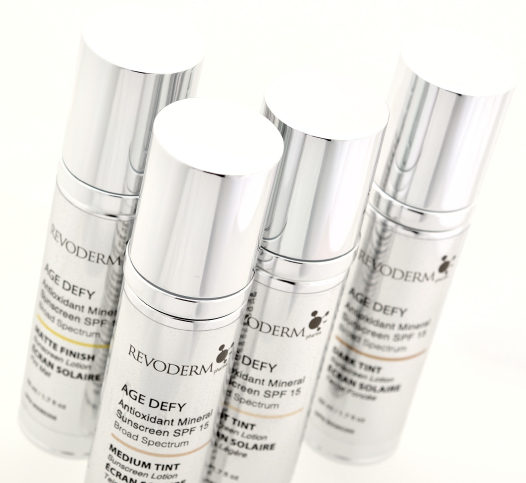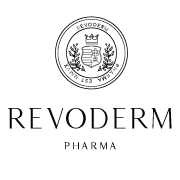
Mineral Sunscreen vs. Chemical Sunscreen. What’s the Difference & What should You Look For? It’s never too late to start wearing sunscreen By Ildiko Juhasz
If you’re like me, I grew up in a generation where we didn’t wear sunscreen religiously. I didn’t have computers or the Internet growing up, or access to information about sunscreen.
Our summer always started with my brother and I playing in the street, skipping, playing ball and hanging out in the blistering sun all day, right until the sun went down. The first few days of summer would find us sitting on a big towel in the living room and peeling burnt skin off of our backs, legs, arms and faces. We were so burned that at night we couldn’t sleep, so my mom would apply homemade cold sour cream on our beet red bodies. The third week of summer was when we would start to maintain what we thought was a “healthy tan”! All that shedding of blistered skin prepared us for our annual family vacation at The Black Sea… and who could forget to bring the baby oil!
Many years later, I’m in Tofino on a cloudy, windy overcast day. I fell asleep, fully clothed on the beach. My face was the only part of me that was exposed to the harsh UV rays. I had the worst burn of my life to the point of having the shivers, probably third degree burns on my forehead and guess what?? My first melasma showed up in a few days and thanks to Revoderm skin care products, you can’t see it anymore.
We got back from my Tofino vacation and the dermatologist I worked with at the time said to me ”You have 24 hrs to wash off your colour from your face if you want to work in this clinic” and I learned my lesson for rest of my life.
So began my interest and research into skin care, which lead to the development of Revoderm, a medical grade skincare line, including chemical free sunscreen and dermatology treatments.
The following information will educate my readers on the import facts of chemical free sunscreen
On May 1 st , 2018, Hawaii became the first state in America to pass legislation banning the sale of sunscreen containing chemicals believed to be harmful to the ocean and coral reefs.
According to the New York Times, 14,000 tons of sunscreen is washed off in oceans every year, and its effects are proving to be devastating. Scientific studies have found that chemicals typically included in mass-market sunscreens contribute to coral bleaching, which essentially means that the ability of coral reefs to sustain life and maintain environmental balance is being eroded by the sunscreen people slough off in the ocean every day. In short, our oceans are dying due in part to the ingredients found in chemical sunscreens.
Now think about this: if chemical sunscreens are contributing to the destruction of our oceans and the overall health of the planet, what are they doing to your skin and your body
Our epidermis is like a sponge. It soaks up whatever we slather on it and absorbs whatever external elements it’s exposed to. So when it comes to sunscreen, two important things need to be considered:
- Every ingredient in your sunscreen is soaked into your system.
- The effectiveness of your sunscreen determines how much protection you get against harmful UVA/ UVB and IR rays. Effectiveness, however, isn’t so much about the SPF level on the bottle, but rather the quality of the ingredients within the bottle.
- Most important is at least 20% zinc oxide as an active ingredient. SPF 15 containing 20% zinc oxide is sufficient for full protection. You need to re-apply every two hours regardless of the SPF number.
- Don’t be misled by the higher SPF number on a sunscreen bottle. Revoderm Age Defy sunscreen was tested in a lab in the USA, it tested SPF 30, but in Canada it tests at SPF 15.
Go ahead and read the ingredients listed on the sunscreen you have at home. Chances are you’ll see words like these: Avobenzone, Homosalate, Octisalate, Octocrylene, and Oxybenzone – all chemical compounds designed to provide UV protection. Are they effective? To varying degrees, yes, depending on the concentration and quality of the ingredients. But just how safe are the ingredients in chemical sunscreens? And how do you know if the ingredients in your sunscreen are of quality?
Protecting our skin from the sun is important – there is no disputing that. Rates of melanoma have been on the rise for 30 years. reported that two types of skin cancer (basal cell carcinoma and squamous cell carcinoma) went up an astonishing 145 percent and 263 percent respectively from 2000 to 2010. Cosmetic concerns have become more common too. Melasma, (link to yourderm)which gives the skin a blotchy appearance, is a common complaint in dermatology offices, and a sign of skin damage that can be quite unsightly. For all these reasons and countless others, choosing (and properly using) a good sunscreen is essential. Daily use of sunscreen will prevent future damage, but any existing sun damage needs to be professional diagnosed and removed. Feel free to reach out to us for a skin surveillance check (skin cancer) Derm.ca or for cosmetic related sun spots book your complimentary consultation. Link to contact
So what’s the difference between mass-market chemical sunscreen and mineral based sunscreen?
For starters (other than the damage that chemical sunscreens are going to our oceans) it’s becoming more and more well documented that chemicals used in synthetic sunscreen are connected to a long list of health issues. Oxybenzone, for example, has been linked to a higher risk of endometriosis, skin allergies, hormone disruptions, reduced fertility in men, and cell damage.
Are chemicals like those something you really want to put on your skin? Are they something you’d feel good about putting on a baby’s skin?
So what’s the alternative
Mineral sunscreens are considered more natural and safer for both our bodies and the environment. The best mineral sunscreens contain zinc oxide and titanium dioxide – elements that occur in nature that are both proven to offer excellent UVA and UVB protection.
While these ingredients are highly effective in mineral sunscreen, just as with chemical sunscreen, the quality of the ingredients matters, so it’s important to do your research on where ingredients in any type of sunscreen are sourced. High quality zinc oxide will help not only guard against sun damage, it will help reduce inflammation and prevent skin irritation as well. You’ll want to find a medical grade mineral sunscreen that has been developed and tested by a triple board certified dermatologist. If you do that, chances are better that you’ll not only be happy with the effectiveness of the product, but the consistency of it as well.
Zinc oxide is thick (which can make it difficult to put on and spread evenly), and in its purest form, it can leave a white residue on the skin. That said, high quality zinc oxide sunscreen should be light and non-sticky, and many product lines, including the Revoderm Age-Defy and Immuvex lines, are tinted – providing a colour boost and shimmery glow to the skin.
No matter what you choose, remember that any sunscreen is better than none. Avoid sprays if possible though – most of those products dissipate in the air before they land on your skin, and inhaling the chemicals in aerosol sunscreens can cause all kinds of respiratory issues.
Slather up at least 20 minutes before heading outside, and reapply every couple of hours if you’re spending extended time in the sun. And the SPF in your makeup? It’s not nearly enough to do an adequate job of protecting your skin. So no matter what plans you have for the day, whether you’re vacationing or having just going about your regular routine, a a top quality sunscreen should always be the first thing you put on every morning.






